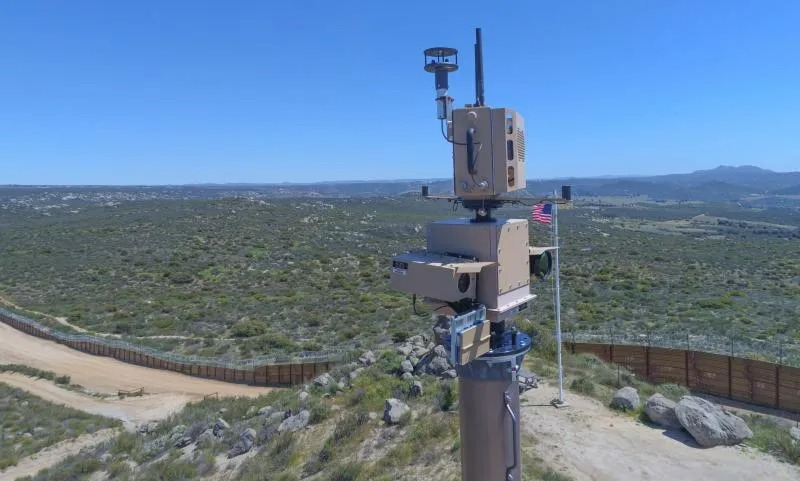Effective border monitoring and surveillance systems are critical for maintaining national security, managing migration, and preventing illegal activities such as smuggling, trafficking, and terrorism. These systems integrate advanced technologies, strategic infrastructure, and highly trained personnel to safeguard a nation’s borders. In this article, we explore the components, technologies, and benefits of modern border surveillance systems and their role in ensuring territorial integrity.
Key Components of a Border Monitoring and Surveillance System
1. Surveillance Technologies
- CCTV Cameras: Provide continuous visual monitoring of border areas.
- Thermal Imaging Cameras: Enable detection of movements in low-visibility conditions, such as at night or in fog.
- Drones and UAVs (Unmanned Aerial Vehicles): Offer aerial surveillance and real-time footage of difficult-to-access terrain.
2. Sensor Networks
- Seismic Sensors: Detect ground vibrations caused by vehicles or foot traffic.
- Infrared Sensors: Identify heat signatures from humans and animals.
- Motion Detectors: Alert authorities to unauthorized movements within restricted zones.
3. Communication Systems
- Radio Networks: Ensure constant communication between border patrol units and control centers.
- Satellite Communication: Provides connectivity in remote and rugged areas.
- Command and Control Centers: Central hubs for analyzing data and coordinating responses.
4. Fencing and Barriers
- Physical Fencing: High-security barriers with anti-climb and anti-cut technologies.
- Smart Fences: Equipped with sensors to detect breaches and send alerts.
5. Automated Vehicles and Robots
- Patrol Vehicles: Equipped with cameras and communication tools for rapid response.
- Surveillance Robots: Perform reconnaissance in hazardous or remote areas.
Advanced Technologies in Border Surveillance
1. Artificial Intelligence (AI) and Machine Learning
- Pattern Recognition: Identifies unusual activities or behaviors in monitored areas.
- Data Analysis: Processes large volumes of surveillance data to detect threats and anomalies.
2. Geospatial Technologies
- GPS and GIS: Map border regions and track movements in real-time.
- Geofencing: Creates virtual boundaries and triggers alerts if breached.
3. Biometric Systems
- Facial Recognition: Identifies individuals at border crossings.
- Fingerprint Scanners: Verify identities of travelers and detect unauthorized individuals.
4. Radar Systems
- Ground-Based Radar: Detects and tracks movements over large areas.
- Maritime Radar: Monitors coastal and maritime borders to prevent illegal entry.
Benefits of Border Monitoring and Surveillance Systems
1. Enhanced National Security
By detecting and preventing unauthorized crossings and illicit activities, these systems play a vital role in protecting a nation’s sovereignty and safety.
2. Effective Immigration Control
Surveillance systems help regulate and monitor the flow of migrants, ensuring that only authorized individuals enter the country.
3. Prevention of Illegal Activities
Advanced surveillance deters smuggling, human trafficking, and drug trafficking, significantly reducing crime rates along borders.
4. Rapid Response Capabilities
Real-time monitoring and communication enable quick deployment of border patrol units to address potential threats.
5. Cost-Effective Solutions
Automated and technology-driven systems reduce the need for extensive manpower, leading to long-term cost savings.
Challenges in Implementing Border Surveillance Systems
1. Terrain and Environmental Factors
- Remote Locations: Difficult-to-access areas require specialized equipment and logistics.
- Harsh Weather Conditions: Extreme temperatures, rain, and snow can impact equipment performance.
2. Technological Integration
- Compatibility: Different systems and technologies must work seamlessly together.
- Cybersecurity: Protecting surveillance networks from hacking and cyber threats is crucial.
3. Privacy Concerns
- Balancing national security with individual privacy rights remains a challenge, especially in populated border areas.
4. Cost and Maintenance
- Implementing advanced surveillance systems requires significant investment and ongoing maintenance.
Future Trends in Border Surveillance
1. AI-Driven Analytics
Artificial intelligence will play an increasingly important role in identifying patterns, predicting threats, and automating responses.
2. Integration of 5G Technology
Faster communication networks will enhance real-time data transmission and improve the efficiency of surveillance systems.
3. Autonomous Drones and Robots
Increased use of autonomous vehicles for continuous patrols and surveillance, even in hostile environments.
4. Enhanced Biometric Solutions
Improved accuracy and faster processing times for facial recognition, iris scans, and other biometric tools.
Conclusion: The Future of Border Security
A robust border monitoring and surveillance system is essential for national security, controlling migration, and preventing illegal activities. As technology continues to advance, these systems are becoming more sophisticated, integrating AI, drones, biometrics, and advanced communication networks to enhance their effectiveness. Investing in state-of-the-art surveillance ensures not only the safety of a nation but also strengthens its global standing in security preparedness.



